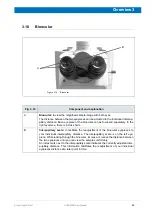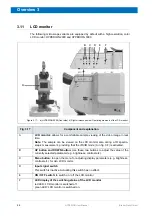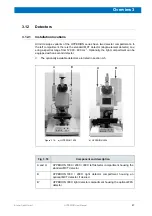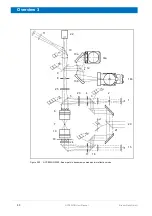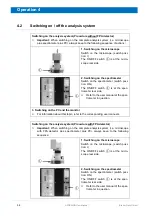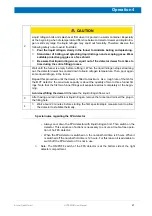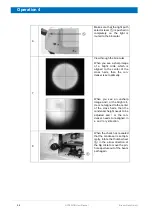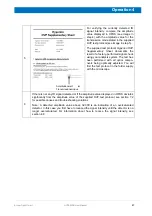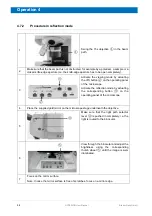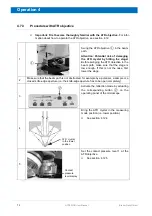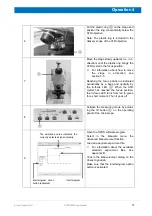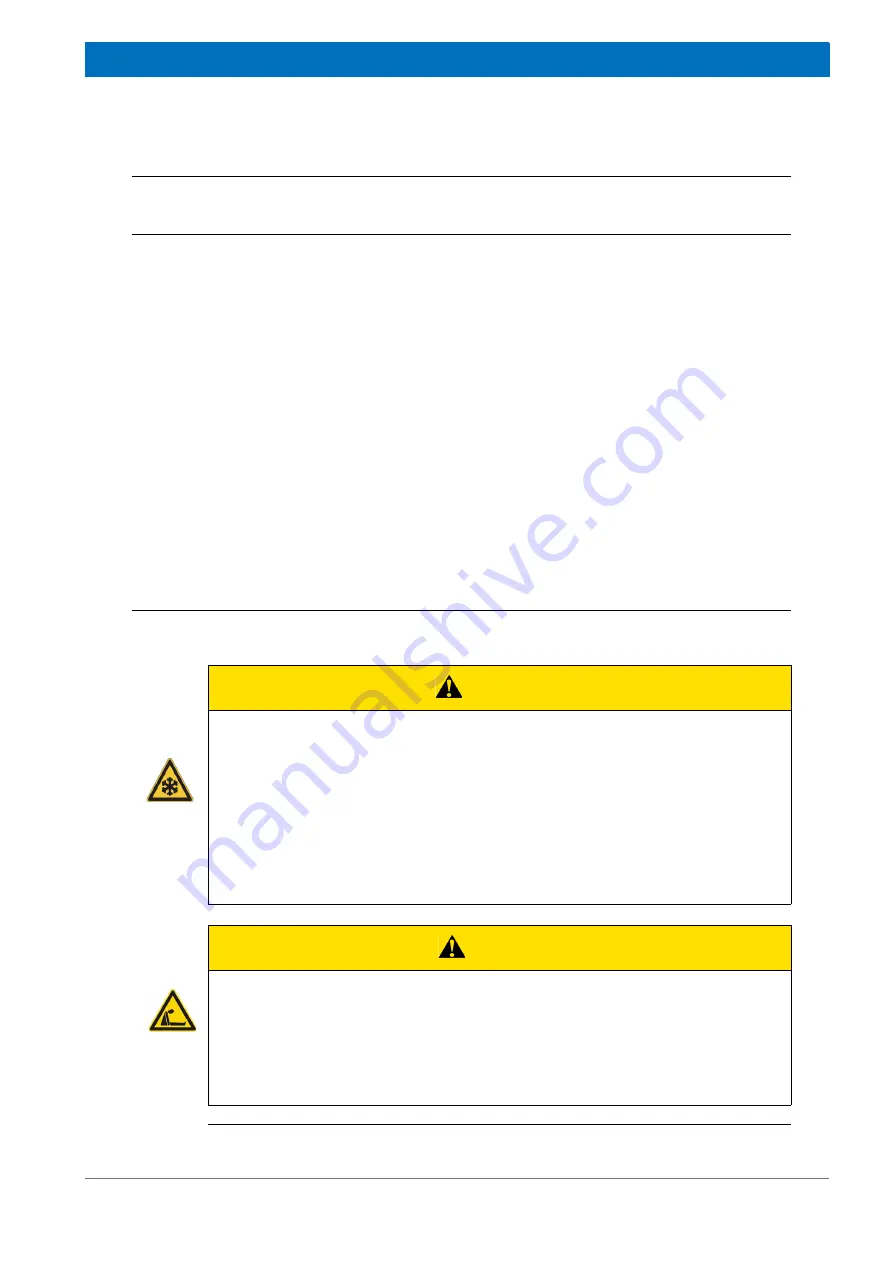
59
Bruker Optik GmbH
HYPERION User Manual
Operation 4
4.4
Cooling the detector
4.4.1
General information
The operating temperature of the available MCT detectors and FPA detectors is signifi-
cantly below room temperature. A low detector temperature ensures an optimum signal
detection. To achieve the required operating temperature, the detector needs to be
cooled down by funneling liquid nitrogen into the detector. Depending on the nominal
hold time
1
of the detector in question, the cooling procedure needs to be repeated in
regular time intervals.
When the cooling effect of the liquid nitrogen decreases and the detector temperature
exceeds a certain value, the detector temperature warning indicator (G in fig. 3.4) on the
operating panel of the microscope lights up red. Other indications of a weakened or dis-
appeared cooling effect are a low signal intensity or no detected signal at all. In case no
signal is detected, the OPUS status lamp turns to red. This problem is also indicated by
the following instrument status message in OPUS:
Detector not ready.
☞
For information about how to check the signal intensity, see section 4.7.
The liquid nitrogen is poured in using the supplied funnel. The funnel is inserted in the
corresponding opening on the top side of the detector compartment. The microscope is
delivered with this opening being closed by a plug.
4.4.2
Safety notes
The temperature of the liquid nitrogen is minus 196°C (minus 320.8°F.)
1. The hold time indicates how long the cooling effect of the liquid nitrogen lasts. The available MCT detectors
have different nominal hold times: 8, 12 and 24 hours.
WARNING
Injury due to improper handling of liquid nitrogen
Non-observance of the following safety instructions may result in an injury.
➣
Risk of frostbites! Avoid any skin contact!
➣
Protect yours eyes against extremely cold gases! Wear a suitable eye or
face protection!
Also the gases escaping from the liquid nitrogen are extremely
cooled and can cause frostbites. The delicate eye tissue can be damaged if
exposed to these cold gases even for a short time. Protect your eyes by wearing a
face shield or safety goggles. Attention: Goggles without side shields do not pro-
vide sufficient protection.
CAUTION
Risk of asphyxiation due to lack of oxygen
Non-observance of the following safety instructions may cause health problems.
➣
Use liquid nitrogen only in well-ventilated areas!
High nitrogen gas concentra-
tions in an enclosed area can cause asphyxiation! Note: Nitrogen gas is colorless,
odorless and tasteless. Therefore, it can not be detected by human senses and
will be inhaled as if it were normal air.
Summary of Contents for HYPERION
Page 1: ...HYPERION User Manual I 24319 ...
Page 56: ...54 HYPERION User Manual Bruker Optik GmbH Overview 3 ...
Page 148: ...146 HYPERION User Manual Bruker Optik GmbH Repair and Maintenance 6 ...
Page 168: ...166 HYPERION User Manual Bruker Optik GmbH Specifications A ...
Page 172: ...170 HYPERION User Manual Bruker Optik GmbH Measurement parameters B ...
Page 174: ...172 HYPERION User Manual Bruker Optik GmbH Spare parts and consumables C ...
Page 175: ...173 Bruker Optik GmbH HYPERION User Manual D System diagram ...
Page 176: ...174 HYPERION User Manual Bruker Optik GmbH System diagram D ...

